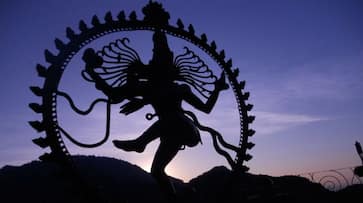Courts have no justification for regulating Hindu religious practices, particularly when they are not doing the same for other religions. Such court interference in a majority religion is unprecedented in the world and legally questionable.
Pilgrimage to Hindu temples and sacred sites is by far the most numerous of any religion in the world and has been so for many centuries. The Kumbha Mela is the largest religious gathering in the world, with its tens of millions of devotees dwarfing the gatherings of any other religion. Almost every day there is a festival somewhere in India attended by lakhs of pilgrims. Every year, tens of millions of Hindus attend some special pilgrimage or the other, like the Char Dham yatra, not to mention regular attendance to temples and celebrations of numerous religious festivals, also far more than any other religion in the world.
One could argue that Hindu temples and festivals, along with their great diversity and cultural treasures, should be protected as a world heritage. The arts and crafts, music and dance, chanting of mantras, recitation of sacred texts and performance of intricate rituals that they preserve also have little parallel anywhere.
Also read: Assertive Hanuman rising again because Hindus face persecution in their own country
Yet there is now a dark shadow over Hindu temples, festivals and practices that may threaten their very existence.
Hindu dharma under siege in India
India is the only country in which the majority religion, in this case Hinduism, is regulated and restricted by courts and governments, and whose revenues are used by state governments to spend on their own mundane purposes.
This unique legal regulation of the Hindu religion has no equivalent anywhere else in the world. The US legal system avoids any interference in religion unless the religion is some sort of a cult that violates civil law and commits a crime, particularly violence. Europe is similar, with European countries like Germany passing on tax revenues to religious groups, certainly not taking money from them for government usage. Former communist Russia is now almost a religious state, strongly protecting the majority Russian orthodox religion.

In Islamic countries, the majority religion of Islam is strongly promoted, protected and funded as we can see not only in the case of Saudi Arabia but also that of Pakistan. Christian countries have become more secular but even the US strongly defends Christian missionary groups overseas, including in India, assuring that their rights are protected and their influence is allowed to be promoted.
Also read: How India's great cultural heritage trumps radical Left propaganda
What is yet more strange and seemingly contradictory, is that the same courts that restrict Hindu practices are remarkably tolerant and accepting of Islamic and Christian practices, and carefully avoid getting involved with any controversies relative to churches and mosques. Their restrictive view of Hinduism along with their accepting approach to Christianity and Islam makes it appear that they are continuing the colonial anti-Hindu prejudices and favouring conversion!
More amazingly, non-Hindus, including atheists, communists and Christians, are allowed to sit on Hindu temple boards and make decisions on how the worship is done and how temple funds are managed. In communist Kerala there is an effort to remove Hindu temples' religious status and regard them as mere state-owned cultural centres. Such state governments claim that their government-run temple boards own the temples as state property. In other words, state governments in India can take over Hindu temples and their land but will never do so for churches or mosques. Clearly, Hindus are second-class citizens in their own country relative to religion.
The many colours and forms of Hindu practices
Hindu temples have an incredible diversity as to their structure, the different deities they honour, how their worship goes on, the different types of devotees they relate to, and the timing of related rituals and festivals. Now courts want Hindu temples to follow uniform practices relative to the latest trends in political correctness from the West, which in India have a strong Marxist influence, though the courts are not making the same restrictions for Christianity and Islam.
In addition, the courts rarely consult Hindu leaders, gurus and acharyas for their views or work with them with respect for the Hindu community that they are trying to regulate. Judges are not trained in Hindu dharmic principles or understand the beliefs that might be behind Hindu practices. They simply pontificate from their legal preferences in an area that has existed long before and covers domains far removed from modern law that should only address the outer aspects of life.
How to respond?
This does not mean Hindu practices may not require some reform or changes along with the times. In fact, that has long been occurring within Hindu society, along with the preservation of the best of ancient traditions. But these reforms should come from within the Hindu society, not enforced from the outside by the courts, particularly when they relate to matters of religious practice. They should be regulated by Hindu acharyas, not by secular judges or political leaders who have their own agendas.
The ultimate issue is simple: courts have no justification regulating Hindu religious practices, particularly when they are not doing the same for other religions. Such court interference in a majority religion is unprecedented in the world and legally questionable. The same is true of Hindu temple funds taken by state governments. It appears not much different than how the British looted India.
Yet unless the Hindu community asserts itself at political and financial levels, such oppression will not change and may in fact get worse. If the Hindus do rise up, given their numbers and the power of their devotion, no force in the world can challenge them. Government and court interference in Hindu institutions and practices must come to an end.
Last Updated Oct 25, 2018, 5:27 PM IST









![Salman Khan sets stage on fire for Anant Ambani, Radhika Merchant pre-wedding festivities [WATCH] ATG](https://static-gi.asianetnews.com/images/01hr1hh8y86gvb4kbqgnyhc0w0/whatsapp-image-2024-03-03-at-12-24-37-pm_100x60xt.jpg)
![Pregnant Deepika Padukone dances with Ranveer Singh at Anant Ambani, Radhika Merchant pre-wedding bash [WATCH] ATG](https://static-gi.asianetnews.com/images/01hr1ffyd3nzqzgm6ba0k87vr8/whatsapp-image-2024-03-03-at-11-45-35-am_100x60xt.jpg)


